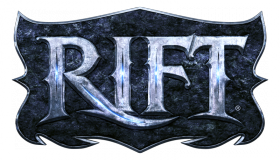Traversing Telara #2: Starting Zone Like No Other
Welcome to Issue #2 of our exclusive series of articles from Trion Worlds that focus on the gameplay mechanics and experiences of Rift! This time, we get into Rift's epic starter zones!
Traversing Telara is an exclusive series of articles from Trion Worlds that explores Rift's lore and gameplay mechanics through the eyes of one intrepid adventurer. It's a great read and a fantastic introduction to the world of Telara. Even if you're a veteran of Rift, you might enjoy hearing about the game from another perspective! Read on for Issue #2: A Starting Zone Like No Other!
Catch up on all the past issues of Traversing Telara here!

The Starter Zones
Every story has a beginning, and most MMOs have some kind of learning curve. Put these together and you have the nigh-ubiquitous starting area: a focused training ground where new players can learn a game's systems and controls. A few decisions about a new character's heroic path may be made, some giant rats may be slain, and a bunch of low-level trinkets are probably acquired. You know how it is.
Not here. Rift's starting areas for both factions - Guardians and Defiants - are effective tutorials, sure, but they forego any quaint rat-hunting and begin in the middle of the epic action. I went quickly from wondering how my new skills worked to planning my next soul attunement and speculating on the outcome of the six-levels-long tale that was woven into the zone. I was drawn in.
Each faction's starting area tells a distinct and dramatic story about the destruction and terror of Regulos the Destroyer, the horrific foe from the Plane of Death unleashed on the world by the wicked Mathosian Prince, Aedraxis. Each starting area also gets your character - your resurrected hero called an Ascended - spec'd out with a complete suite of soul powers. Let's see how that works.

Training in Soul Trees
To battle Regulos and save Telara, both factions rely on Ascended - heroic and ancient souls resurrected in bodies capable of attuning themselves to up to three component souls at once.
Each soul grants access to a skill tree containing a variety of abilities and powers, bought and improved with soul points. A soul tree is divided into two key parts: branches and roots. Spend soul points on the powers you like in one tree's branches and you simultaneously unlock a fixed sequence of new abilities in the tree's roots as you pass key point-total thresholds. No matter which specific powers you buy up in the branches, you'll unlock certain root abilities once you've spent, for example, two or four points in that tree.
The choice of where to spend your soul points only gets more interesting as you add a second and third soul tree to your character. As you level up, you gain more soul points to spend on any of the three soul trees you like, customizing your character's strengths and focusing on the play style you're most interested in. It's a sharp system.
Each calling - Warrior, Rogue, Mage, and Cleric - offers eight soul trees. Each starting area awards your character's three souls gradually, over the course of a few quests, so you get the hang of one, then the next, and then the last. Let's look at the starting areas and the soul trees I chose.

Mathosia: Battle of the Guardians
The starting zone of the fanatical Guardians lays at the heart of a vicious battle between the hateful army of Regulos and the desperate defenders of Mathosia. The Guardians, as devotees of the gods known collectively as the Vigil, believe victory against Regulos may draw the Vigil back to the world of Telara, thereby restoring glory and grandeur to the land. As Brother Jebiah said, "We must purge evil without hesitation. Ascended do not look the other way."
Starting Guardian quests teach us how to do battle, how to use quest-specific inventory items to complete quests (by, for example, drawing angelic Messengers of the Vigil to the ruins of once-great cities or by hurling spectral shields into dangerous undead creatures), and how to spec out our soul trees.




